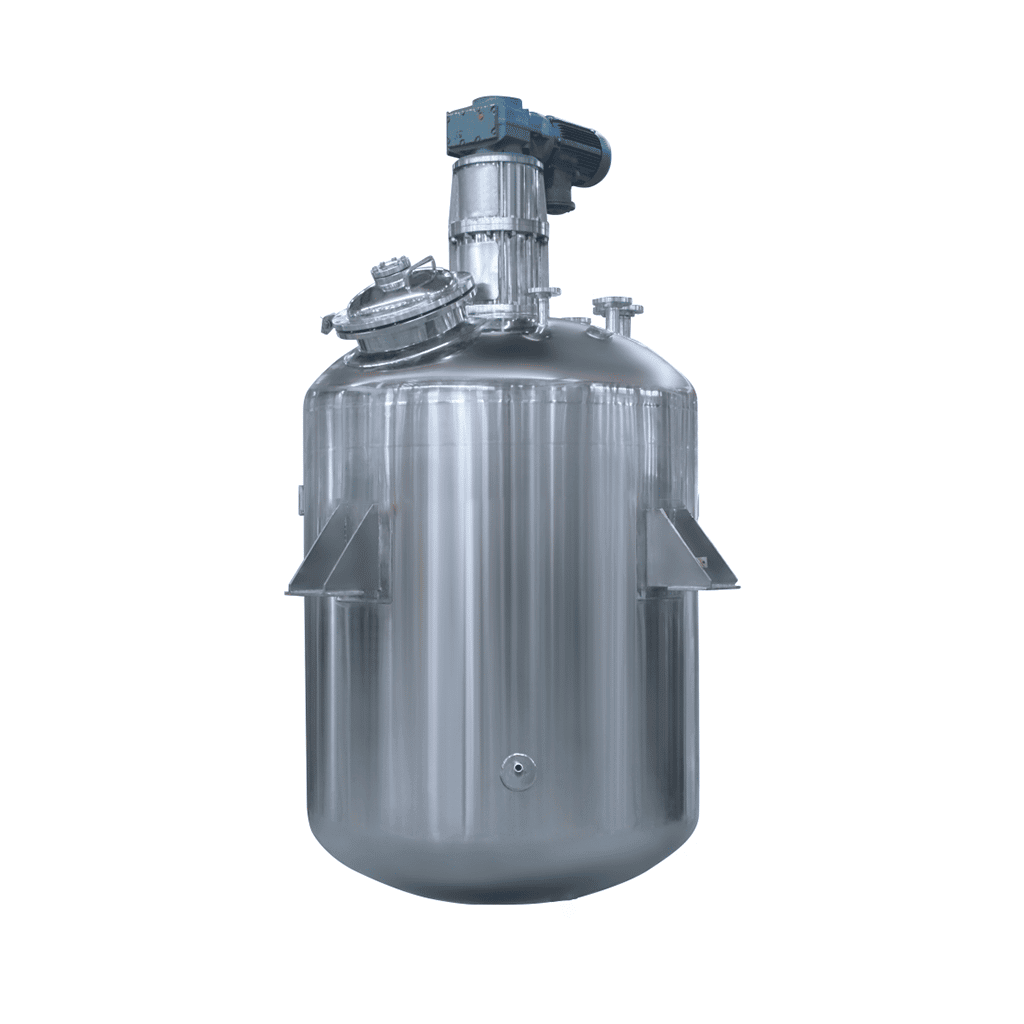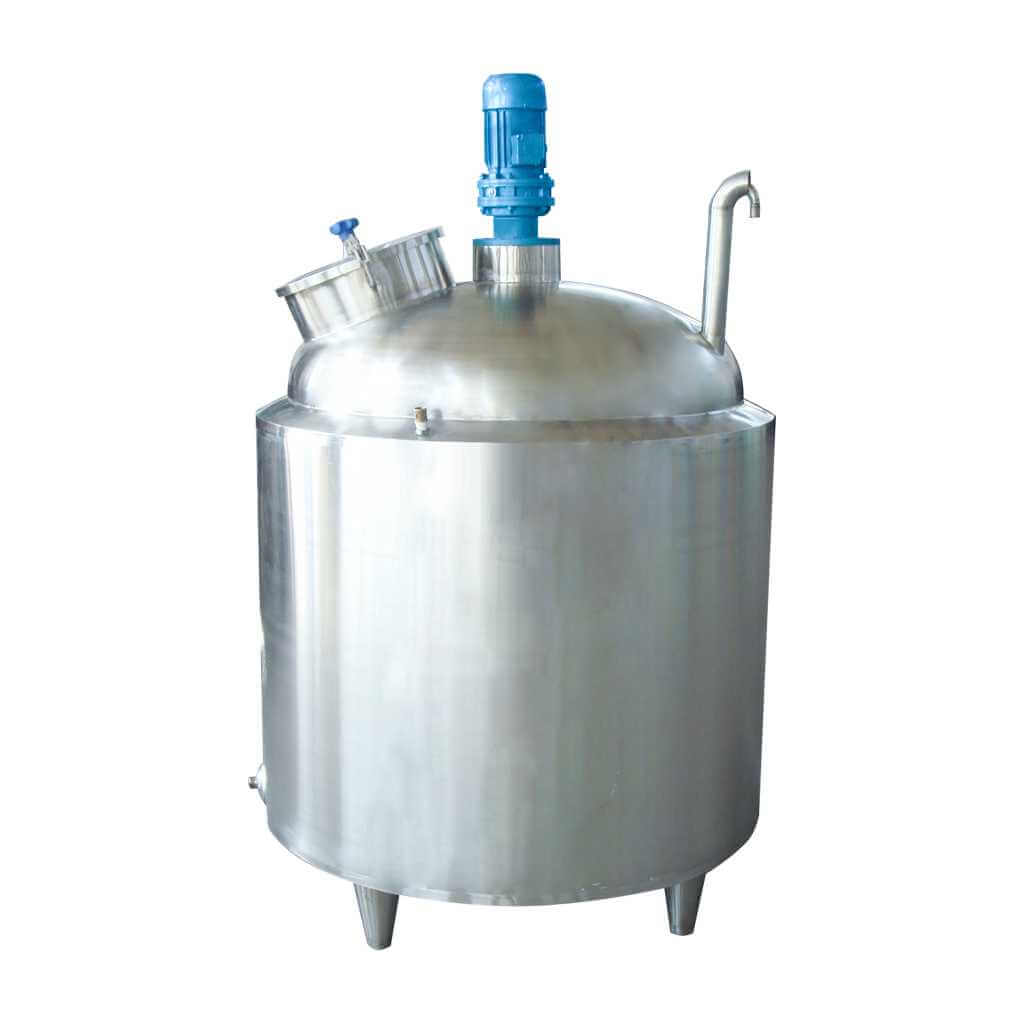
-24-1.jpg)
Stainless Steel Reactor
Stainless Steel Reactor: used in dairy products, sugar, beverages, and other fields
Material
stainless steel (316, 304)
Capacity (L)
10-10000+
Mixing system
anchor, paddle, frame and others
Heating system
electric heating, oil heating and others
A stainless steel reactor is a stainless steel container equipment. The stainless steel reactor consists of a kettle body, a kettle lid, a stirrer, a jacket, a bracket, a transmission device, a shaft seal device, etc. Materials and openings can be made according to user needs and process requirements. Stainless steel reactors are mainly used for stirring, homogenizing, and mixing storage of dairy products, sugar, beverages, food, and various pharmaceuticals.
Request a quoteWith the long-term use of stainless steel reactors, during any kind of polymerization process, the inner wall of the reaction vessel, stirring equipment, and other parts will inevitably produce the deposition or adhesion of polymer plastics (i.e., the sticking phenomenon). Due to its unique working characteristics, the stainless steel reactor needs to be cleaned regularly inside. On the one hand, it can improve its efficiency in operation, and on the other hand, it can avoid long-term accumulation of dirt and chemical dirt from affecting its efficiency.

Reasons for choosing high pressure water jet cleaning for stainless steel reactors
Stainless steel reactors are traditionally cleaned manually or chemically. Manual cleaning requires workers to enter the stainless steel reactor and use tools to scrape off the hard scale from the inner wall. However, this method requires many personnel, is labor intensive, and has a poor cleaning effect. At the same time, cleaning tools will also scratch the inner wall of the stainless steel reactor and the surface of the stirrer. Moreover, the internal environment of the stainless steel reactor is not good, and the chemical substances inside can cause harm to workers.
Chemical cleaning generally involves determining whether the cleaning agent will cause corrosion to the metal of the stainless steel reactor, and then setting up a temporary circulation device on site to circulate the cleaning liquid in the stainless steel reactor to wash away the dirt. However, this method has disadvantages in terms of environmental protection and can easily cause environmental pollution. Moreover, when the chemical composition of the dirt is similar to that of the reaction vessel, improper handling may easily lead to corrosion of the reaction vessel.
Working principle of high pressure water jet cleaning of stainless steel reactor
Install the telescopic mechanism of the three-dimensional rotating nozzle on the inlet hole of the stainless steel reactor, and extend the telescopic rod into the stainless steel reactor. The telescopic mechanism can be controlled manually, electrically, hydraulically, etc. The telescopic rod expands and contracts in the stainless steel reactor and moves along the direction around its inner wall. According to the specific actual situation, a 2-hole or 4-hole three-dimensional automatic rotating nozzle can be selected. When the three-dimensional automatic rotating nozzle rotates horizontally, the rotational torque formed by the water jet drives the nozzle to rotate in the vertical plane. Due to the composite movement of the three-dimensional rotating nozzle and the telescopic rod, the high pressure water jet can cover any position in the stainless steel reactor. Then use the kinetic energy of the high pressure water jet to break up the hard dirt on the inner wall of the stainless steel reactor and the surface of the stirrer, thereby peeling off and removing it. This completes the cleaning of the stainless steel reactor.

Advantages of high pressure water jet cleaning of stainless steel reactors
1. Analyze the cleaning requirements based on the scale situation and select the appropriate pressure level. High pressure water jet cleaning will not cause damage to the stainless steel reactor. Its surface is smooth and the scale is difficult to adhere to;
2. The cleaned stainless steel reactor and parts do not need to be cleaned;
3. It can be cleaned in harsh environments, and people do not need to enter the stainless steel reactor. In this way, the chemical substances in the stainless steel reactor will not cause harm to the human body, which is safer and eliminates the hidden dangers of manual cleaning and chemical cleaning;
4. High pressure water jet cleaning uses ordinary water at high speed for scouring cleaning. Therefore, it does not pollute the environment, does not corrode equipment, does not cause any mechanical damage, and can also remove special scale that is difficult or soluble with chemical cleaning;
5. Easy to implement mechanization and automation;
6. The cleaning rate can reach more than 90%;
7. The cleaning speed is several times faster than traditional methods. It only takes about 15 minutes to clean a stainless steel reactor;
8. High pressure water jet cleaning uses water as the medium, which is odorless, tasteless, and non-toxic. After atomization, the air dust concentration in the working area can be reduced, and the air dust can be reduced to below international safety standards without causing pollution to the environment.
In production, stainless steel reactors must be inspected and cleaned regularly after being used for a period of time, so that they can better exert their performance and also play a role in maintenance. Therefore, it is necessary to clean the stainless steel reactor correctly, which can save energy, reduce costs, and greatly reduce the energy consumption of enterprises in the production process. At the same time, cleaning the stainless steel reactor can ensure the unity of the reaction, reduce the occurrence of impurity reactions, and greatly reduce the probability of safety accidents. In addition, a clean stainless steel reactor working environment can greatly reduce the load on heat exchange equipment and extend its service life.




